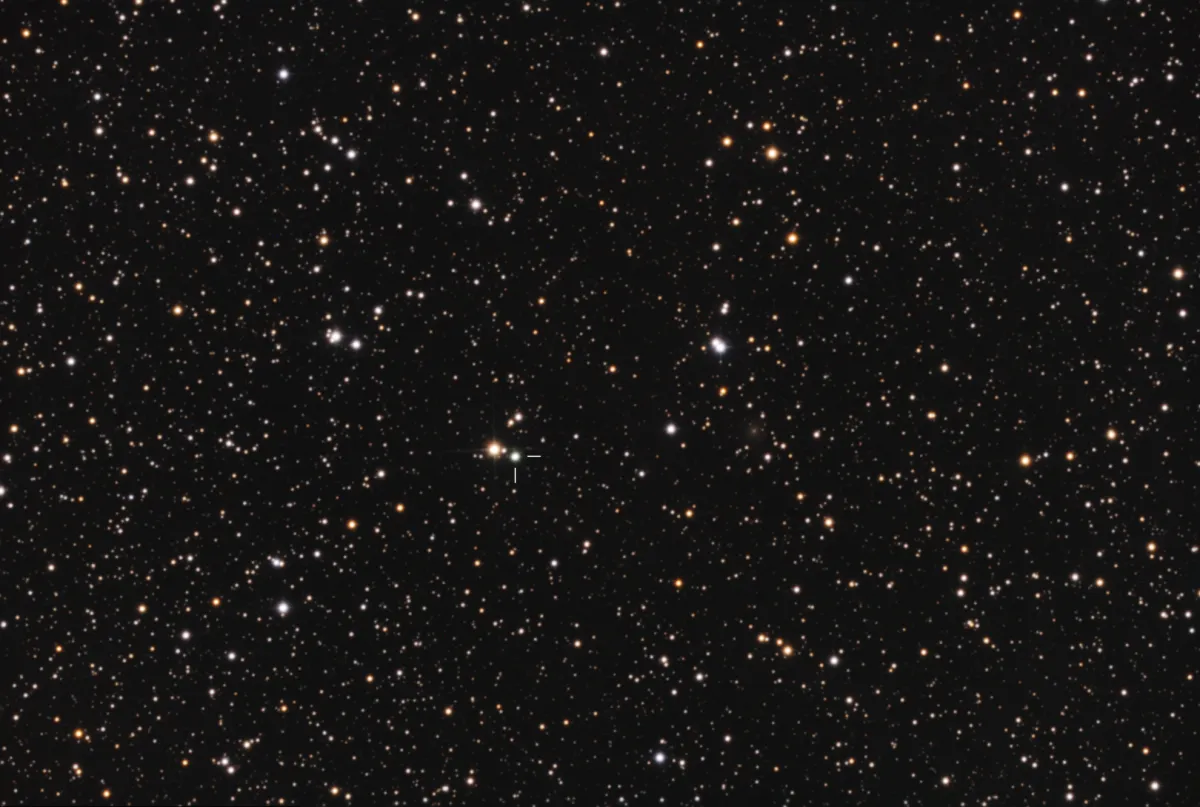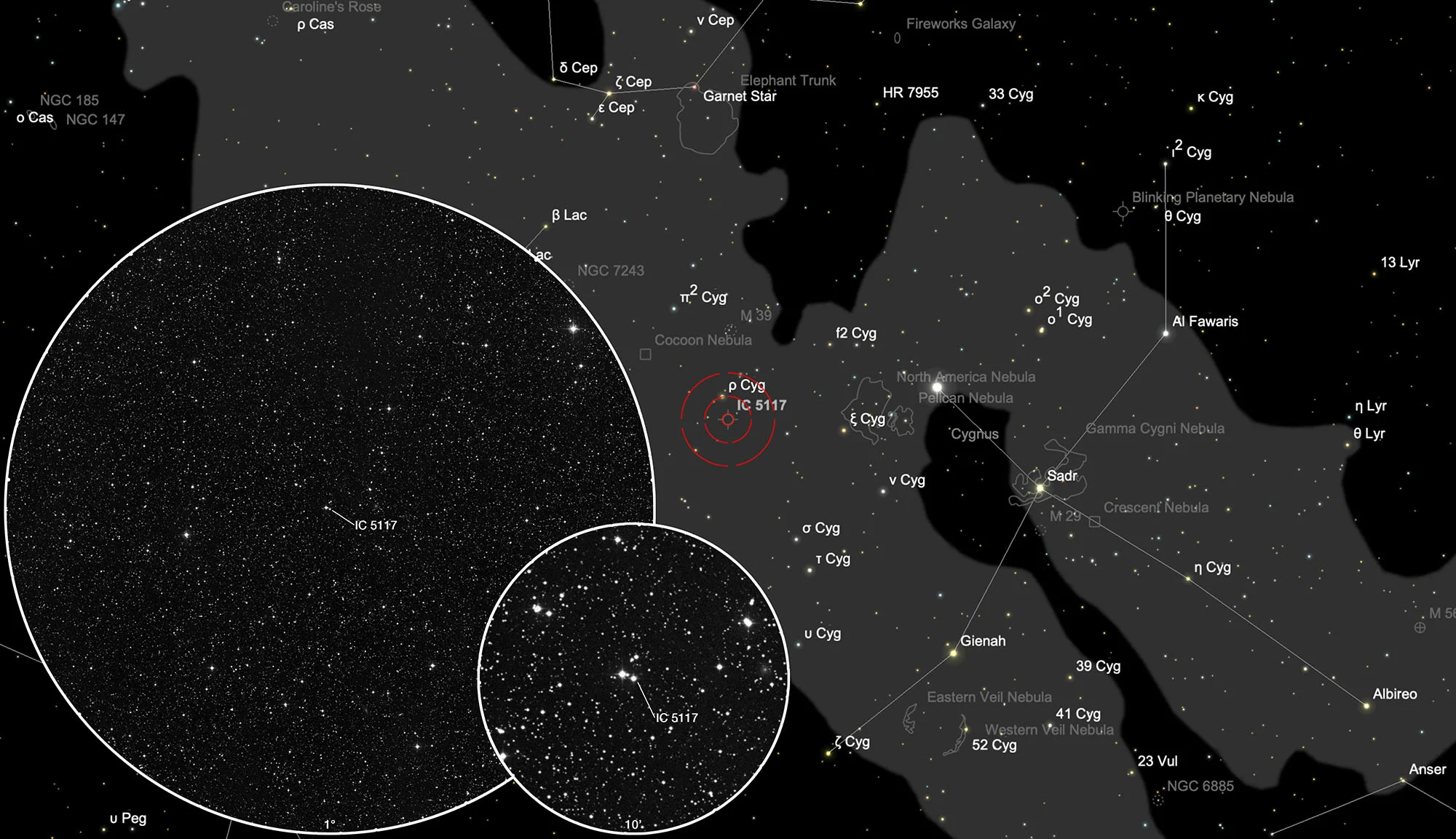Planetary Nebula IC 5117

History
The planetary nebula IC 5117 was discovered in 1905 by the Scottish-American astronomer Williamina Fleming. Dreyer described the nebula in his 1910 second index catalog as «planetary, stellar». [196, 315]
Physical Properties
In fact, with an angular extent of only 1.2 arcseconds, the PN can hardly be distinguished from a star. The apparent brightness measured in different filters: V 16.7 mag, J 11.3 mag, H 10.7 mag, K 9.5 mag.
IC 5117 is a very young and compact planetary nebula. The gas surrounding the central star is still very dense with 90'000 molecules per cubic centimeter and very hot with a temperature of 12'000 Kelvin. The central star is estimated to have a temperature of 120'000 Kelvin. The distance is estimated to be 3 kpc (about 9700 light years). Exact measurements are not available. [337]
| Designations | PN G089.8-05.1: IC 5117, PK 89-05.1, ARO 112, VV 266, VV' 552 |
| Right Ascension (J2000.0) | 21h 32m 31s |
| Declination (J2000.0) | +44° 35' 48" |
| Dimensions | 1.2" (optical), 1.5" (radio) |
| Distance | 2.5 kpc |
| Radial Velocity | -26.1 ± 1.3 km/s |
| Expansion Velocity | 16.5 (O-III) 21.5 (N-II) km/s |
| C-Star Designations | AG82 431, CSI +44-21305 0, EM* CDS 1256, HD 205211 |
| C-Star Magnitude | B: 17.5, V: 16.7 |
| C-Star Spectral Type | WR |
| Discoverer | FLEMING 1905 |
Finder Chart
The planetary nebula IC 5117 is located in the constellation Cygnus. The best observation time is April to January
